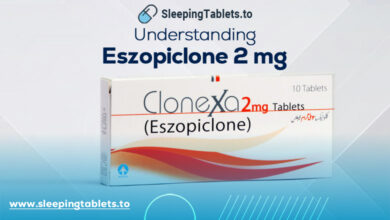
The Different Types of Eye Conditions That Are Diagnosed Today
Our eyes are the second most complex organ in the body. For one thing, they’re capable of detecting more than 10 million colors. Not only that, but they can focus on 50 different objects every second!
Certain eye disorders, however, can affect our vision. In fact, they’re more common than you think.
According to the CDC, nearly 12 million Americans over the age of 40 are visually impaired.
What are some of the most common eye conditions? What symptoms should you look out for? Find out the answers by reading the rest of the post!
Table of Contents
Age-Related Macular Degeneration
Age-related macular degeneration (AMD) is a common eye disorder that can lead to central vision loss. It’s caused by the deterioration of the macula, a small part of the retina that’s responsible for giving us clear vision.
A progressive disease, its symptoms usually worsen over time. For example, you may experience visual distortions (e.g. straight lines might appear wavy), blurriness, and difficulty adapting to low lights. There may also be dark or blank spots in your field of vision.
While there’s no cure, there are treatments that can slow down the progression of the disease. For instance, your doctor may recommend laser therapy or anti-angiogenesis drugs.
Glaucoma
Glaucoma is an eye disease that occurs when pressure builds up inside the eye. Over time, this can erode the optic nerve—a bundle of nerve fibers that carry visual information to the brain. Left untreated, it may lead to vision loss or even blindness.
There are two main types—open-angle glaucoma and angle-closure glaucoma. The former progresses slowly over a long period of time while the latter occurs quickly and is considered to be a medical emergency.
Seek emergency eye care right away if you’re experiencing severe eye pain, blurred vision, severe headache, and vomiting as prompt medical treatment will be necessary.
Diabetic Retinopathy
Diabetic retinopathy is a common complication of uncontrolled diabetes. It occurs when high blood sugar levels damage the retina, or more specifically, its tiny blood vessels.
Eventually, the vessel walls will leak or ooze fluid and that can lead to various symptoms including blurred vision, difficulty distinguishing colors, and difficulty seeing at night. You may also notice floaters or dark spots, usually in both eyes.
It’s also worth mentioning that there are three main stages—mild, moderate, severe. From there, it may develop into proliferative diabetic retinopathy, an advanced stage in which new blood vessels start to grow within the retinal tissue. This can lead to severe vision loss and even blindness.
Understanding the Most Common Eye Conditions
There are many different eye conditions that are diagnosed today, including macular degeneration, glaucoma, and diabetic retinopathy. For those who are experiencing symptoms, don’t wait—contact an eye doctor right away. The sooner you get treated, the better the outcomes.
Was the content in this post helpful? For more articles like this, be sure to browse through the rest of our health section!
For those who are experiencing symptoms, don’t wait—contact an eye doctor right away. The sooner you get treated, the better the outcomes.
Was the content in this post helpful? For more articles like this, be sure to browse through the rest of our health section!








